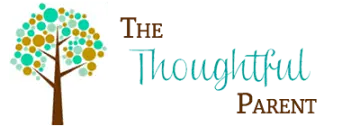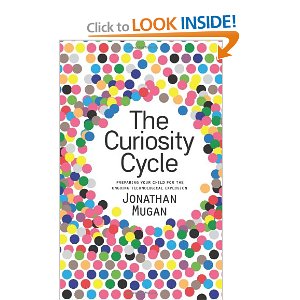“Consider the marvel of McDonald’s. Imagine that you were talking to a caveman who had spent all day hunting a woolly mammoth with nothing to show for it but a broken arm and some bruised ribs. You can tell him that there is this place where you walk in and order any food you want, as much as you want, and they give you the hot food you ordered and then they thank you.”
At this point, you may be wondering what all this has to do with technology. In the last chapter, Mugan makes the connect between the curiosity cycle and the ever-changing technological landscape that our children will face. To me, it comes down to this: unless a child (or adult) is curious and thinks critically, there is a good chance in the future that their role/job could be replaced by a computer. Mugan puts it this way, “Increasingly, your child will be evaluated less on the ability to regurgitate information, because computers can do that now, and more on the ability to create new things.” The role of the curiosity cycle, then, is to help children learn the critical thinking skills necessary to effectively gather and use the information and technology that is available to them. I feel this is the key point of the book. An authentic, in-depth curiosity of the world is what our children will need to function well in the future. I find this point especially important in the atmosphere of standardized testing that seems to dominate our education system at this time. Although I think strides are being taken to incorporate more critical thinking skills into the educational process, in many places the push towards standardized testing has served to undermine the curiosity cycle. But that’s another topic for another post.
Needless to say, I enjoyed this book and felt it was a unique approach to the topic. If you have an interest in fostering your child’s curiosity (and what parent doesn’t), then take a look at this book.
By the way, did you catch my guest post on Imagination Soup? I’ve written quite a bit lately about the distinction between academic and play-based preschool. This piece addresses the issue again and reviews some of the latest research on the topic. Take a look at all the wonderful resources at Imagination Soup while you’re there.


Melissa Taylor
I have this book on my stack to read . . . thanks for the review. And, a BIG thanks for guest posting on Imagination Soup!
Suzita @ playfightrepeat.com
The Curiosity Cycle sounds really good. Thanks for reviewing it! The themes it explores remind me of those in Daniel Pink's book, A Whole New Mind: Why Right-Brainers Will Rule the Future. However, Pink's book is geared a bit more toward adults. I look forward to reading one for parents and kids.
karen
Thanks for posting such an interesting review. I will definitely want to take a look at this book. It seems right in line with my interests about how we can help children to become more creative thinkers.